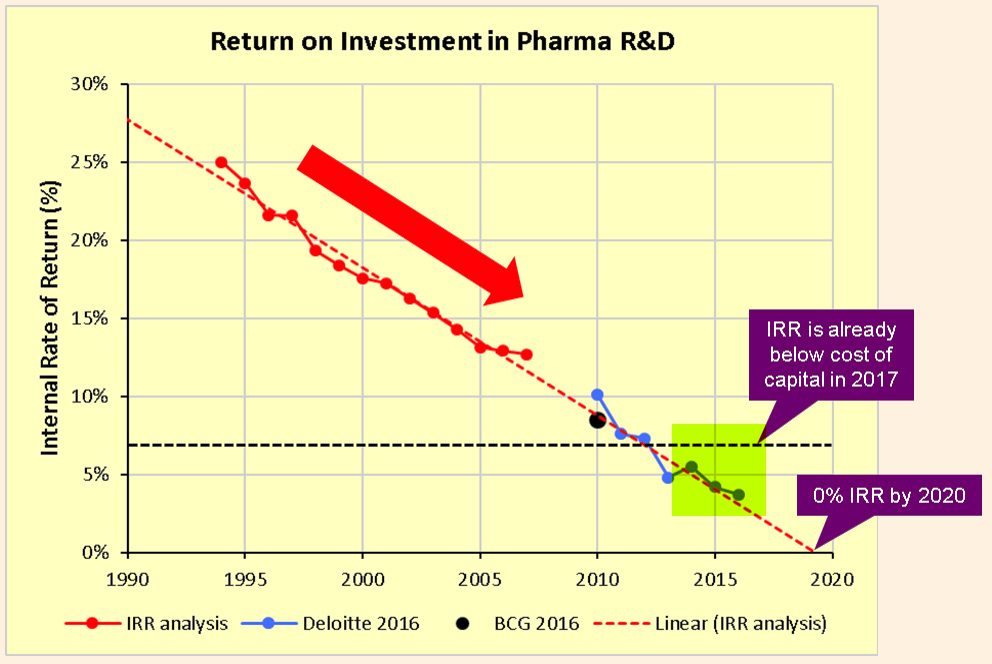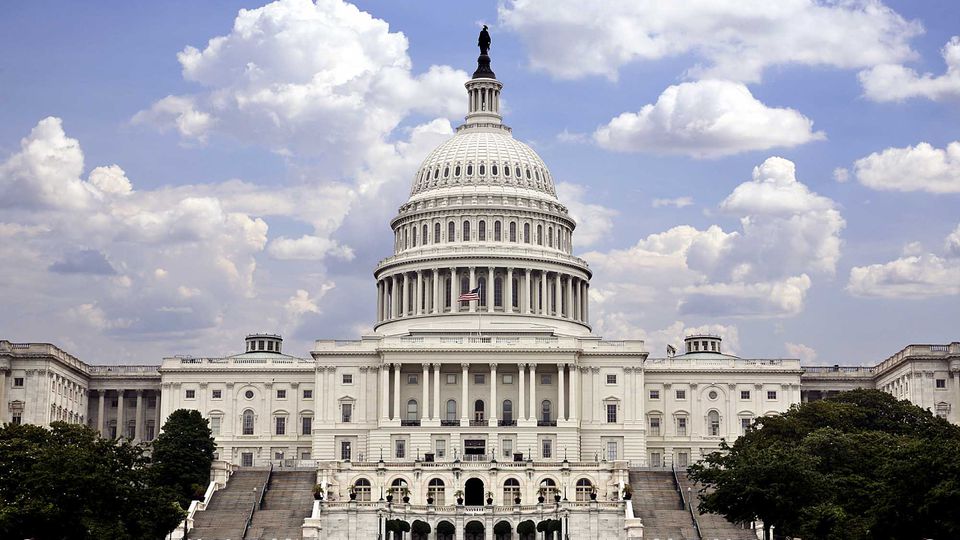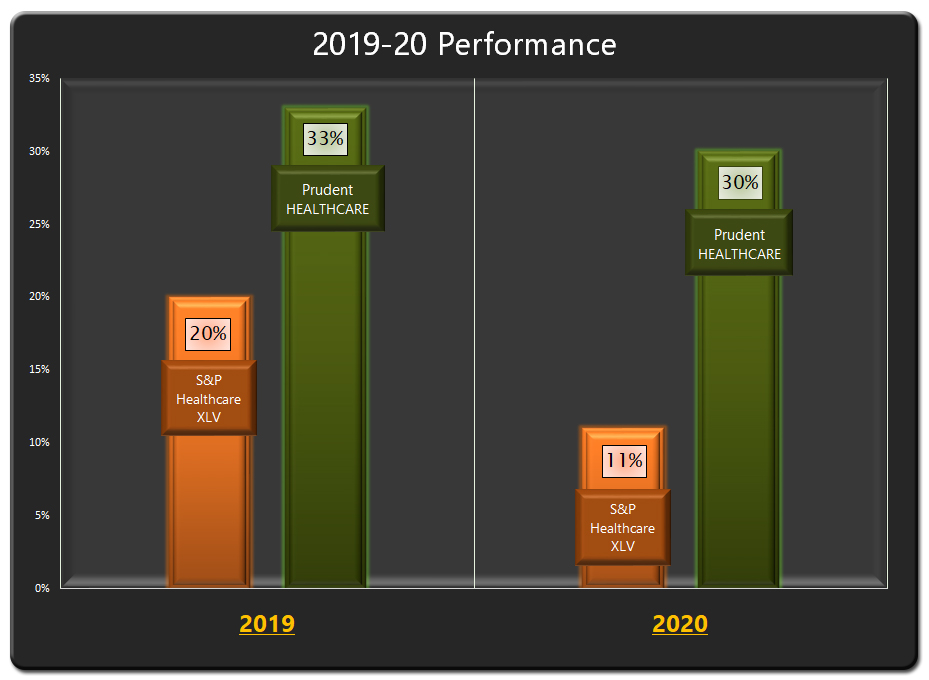Healthcare Is Ready To Lead In 2021
- Healthcare lagged the broader market last year, but that can change this year.
- A cyclical upturn as the pandemic abates and pent-up demand can boost healthcare.
- Best positioned are industry groups within healthcare that can achieve secular growth beyond the cyclical rise.
- Biotechs, Medical Devices and Systems, and Medical Services could do exceptionally well and gain more than the healthcare benchmark.
Healthcare Pulse
Last year was all about healthcare as the pandemic brought the world to a halt, withering economies, destroying livelihoods, and sending millions to hospitals. The year presented challenges that were unprecedented in modern history. The pandemic is not over yet, and the daily death rate in the US may peak late in February if the fatality rate mirrors the path of the flu season. But healthcare has given the world hope for a 2021 turnaround as biotechs and pharmaceuticals are delivering on the promise of vaccines.
As much as healthcare was ingrained by the pandemic into the 2020 fabric, the stock market did not reward the sector. It was a struggle all year long for the S&P Healthcare Index to even stay positive. Entering November 2020, the healthcare index was down slightly for the year, and its annual gain of 11% was well below leading benchmark indexes like the S&P 500.
In determining total returns, equally important as security selection are the times when one is invested and the investing behavior based on the investment approach. This served us well as the various Prudent model portfolios outperformed their benchmarks.
Can Healthcare Lead in 2021?
Although the healthcare sector lagged the broader market, there were industry groups that did quite well. Biotech was one of the leading healthcare groups and should continue to do well in 2021, as outlined in the Biotech Bonanza 2021 Outlook.
It is likely that as the year progresses, gains will broaden out across the healthcare sector, and particularly for groups that have been adversely affected by the pandemic. These include the entire hospital-related ecosystem, medical devices, and medical systems, amongst others.
In many cases, there has been a demand shift or deferral. As the battle against the pandemic begins to tilt in our favor, likely by the early second quarter, we can witness significant pent-up demand beginning to flow into the healthcare system and surging in the second half.
Healthcare will be affected by new trends. The sector will continue to experience growing digitization which will create new opportunities while threatening some existing markets. The pandemic has opened up new ways of conducting business processes, which in many instances are being found to be more efficient. Whether it's the use of telemedicine or telehealth or virtual trials in clinical development, it's clear that many of these shifts spurred by the pandemic will remain permanent.
The new administration also has taken up the challenge of reducing disparities in healthcare. Access to healthcare is a prominent example where inequities exist. But it also touches many processes and systems within healthcare, including the way drug development and trials are run that are not representative of demographics. This shift will create opportunities.
A lot is happening in healthcare and there's much to celebrate in how rapidly and extensively healthcare has served the country during this dark period of the pandemic. There's also much to address and fix, as well as applying lessons learned from the pandemic. All this creates market opportunities.
Healthcare holds significant promise for investors. Sectors that lag during the early stages of recovery typically do catch up as the economic recovery strengthens unless they get bogged down in structural issues, like the ones being faced by the energy industry.
Focus on Secular Growth

The pent-up demand that's likely to emerge will elevate healthcare through the year. The companies that are best positioned are the ones that will be able to participate in the cyclical growth from an improving economy, as well as generate secular growth.
The new administration will focus on expanding healthcare services and their further digitization. Such a structural change should be beneficial for hospital systems, outpatient centers, home-care, mental healthcare, etc. Government funding for life sciences research is going to increase rapidly. The pandemic will increase budgets for CDC and NIH, which provides billions of research dollars to smaller life science companies. There also will be financial support to build a home industry for vital healthcare supplies. Billions of research dollars will now be allocated for moonshot outcomes as well, particularly in oncology, where a cure for cancer has long been a personal goal of President Biden, and in Alzheimer's disease. This makes sense as the public-private partnership model that delivered vaccines and treatments for the pandemic should now be applied at scale to curing major diseases.
A greater focus on healthcare costs can adversely affect groups like the benefit management companies and insurance providers that can encounter margin pressure.
Biotechs and Pharmaceuticals
Biotechs will retain their position as a premier industry group in healthcare investing. As we had noted in our biotech outlook, life science is advancing at a rapid pace with new ideas, new approaches, and new technologies. This pace of breakthrough innovation was showcased by the vaccine development for the pandemic, where timelines that run from four to 10 years were shrunk to seven months. The collaboration with the government, which took the risk by providing non-dilutive funding to companies, contributed significantly to shrinking the timeline and can be a model for finding cures to other diseases.
This is a golden period for biotech investing driven by astounding scientific progress, a highly favorable macro environment towards risk-taking, and strengthening M&A.
Pharmaceuticals continue to aggressively address their R&D, and one of the favored strategies has been to acquire biotechs to boost the pipeline of potential drugs. Much of the drug innovation is happening in the small-cap and mid-cap space with companies that have revenues of less than $500 million, as per the IQVIA Institute.
The R&D returns for pharmaceuticals have trended lower as it has become harder to develop blockbuster drugs that can offset the failures in the pipeline. Pharmaceutical companies are struggling with a drug development model where the Internal Rate of Return or IRR on the significant R&D expenditures has been steadily declining. Already believed to be in the low single digits, the IRR runs the risk of heading toward zero in 2020 and perhaps worse. These were the insights from a compelling analysis in 2017 by industry writer Kelvin Stott as well as analyses by consulting firms Deloitte and the Boston Consulting Group. The pharmaceutical R&D trends have not changed over the years.
The pressures are only going to intensify on the pharmaceutical industry as healthcare costs remains a number one public interest issue by far. We believe pharmaceuticals with unique pipelines are well-positioned, but one has to be highly selective in this industry group.

Medical Devices, Systems, and Services
Medical Devices, Medical Systems, and Medical Services are examples of groups that are well-positioned to benefit from the pent-up demand and secular growth. A healthcare technology upgrade cycle will ensue later this year as deeper digitization of the healthcare industry occurs. Such secular trends will sustain growth for multiple years. Along with biotechs, we believe Medical Devices, Systems, and Services groups represent a highly attractive opportunity within healthcare.
Regulatory Environment

Healthcare has played a pivotal role during the pandemic, further establishing the central role it plays in the US economy and the size of its impact on the population. This can draw more scrutiny once the pandemic is overcome, and lead to a more regulated environment to ensure greater access to healthcare as lessons learned from the pandemic about health-access inequity are applied.
A key issue has been drug pricing and affordability of healthcare. This also remains the No. 1 public-interest issue, which ensures continued political momentum. The cost issue will likely re-emerge late in the second half of this year or early next year. The customary drug price increases in January showed an average increase of 4.5% for 600 drugs, compared to 6% for 639 drugs in 2020.
Executive orders were issued in November last year by the Trump administration to peg price increases for 50 drugs to the prices paid by a group of developed nations. But the industry is going to fight tooth-and-nail in the courts, and it's unclear this early in the new Biden administration how the executive orders will be followed through. But pharmaceuticals will not be able to walk away from the issue, particularly next year.
Conclusion
After lagging last year, the S&P Healthcare Index was up 1% as of Feb. 1, compared to the S&P 500 loss of -1%. Prudent Healthcare gained +22% over the same period.
We believe a healthcare exposure can be rewarding this year, although the sector will remain a stock-picker's market. We have highlighted the industry groups above that we feel will have an outsized impact on the sector's performance. Healthcare can witness a cyclical rise as the pandemic abates, and the pent-up demand emerges. The sector will also go through some major changes, due to the experience gained from the pandemic, and that too will result in major opportunities.
For the year, we anticipate the S&P Healthcare Index to rise 10% to 15%, with significantly more gains for certain groups within healthcare.
There will a significant pool of promising healthcare companies with a potential for strong gains. A few such companies, some of which may be now or in the past part of our Prudent Healthcare or the Prudent Biotech model portfolios include Pacific Biosciences (PACB), Inmode (INMD), Natera Therapeutics (NTRA), Glaukos (GKOS), Shockwave Medical (SWAV), Myriad Genetics (MYGN), Covetrus (CVET), Inari Medical (NARI), OrganoGenesis (ORGO), Staar Surgical (STAA), Surgery Partners (SGRY), and Alphatec (ATEC). A few promising biotech companies were listed in the Biotech Outlook and some of them are Moderna (MRNA), Beam Therapeutics (BEAM), Arrowhead Pharmaceuticals (ARWR), Fate Therapeutics (FATE), TG Therapeutics (TGTX), Arvinas (ARVN), Kodiak Sciences (KOD), BridgeBio Pharma (BBIO), Five Prime Therapeutics (FPRX), Intellia Therapeutics (NTLA), Celldex (CLDX), Scholar Rock (SRRK), and Editas (EDIT).
Healthcare investing is volatile and high-risk. Investors should pursue a concrete investment strategy preferring a portfolio approach by investing in a basket of promising companies that can assist in managing risk and overcoming mistakes.
Disclosure: I have no positions in any stocks mentioned, and no plans to initiate any positions within the next 72 hours.




